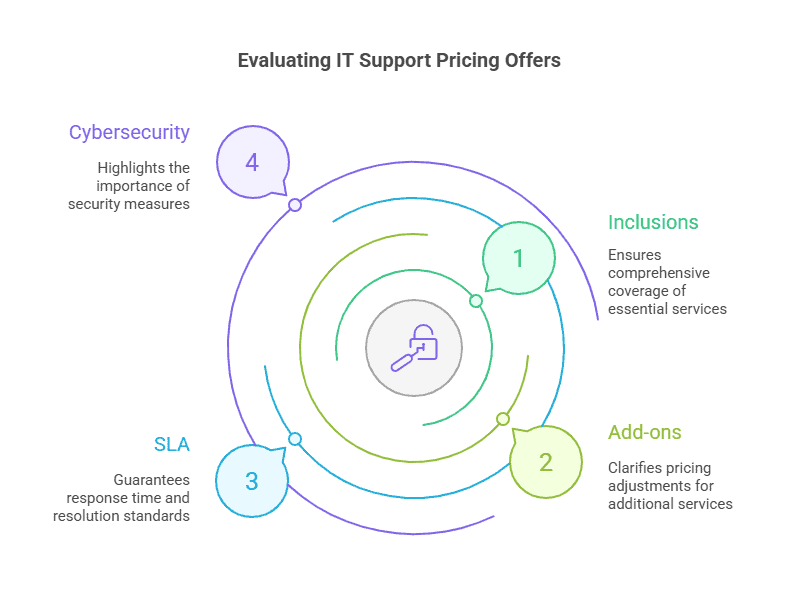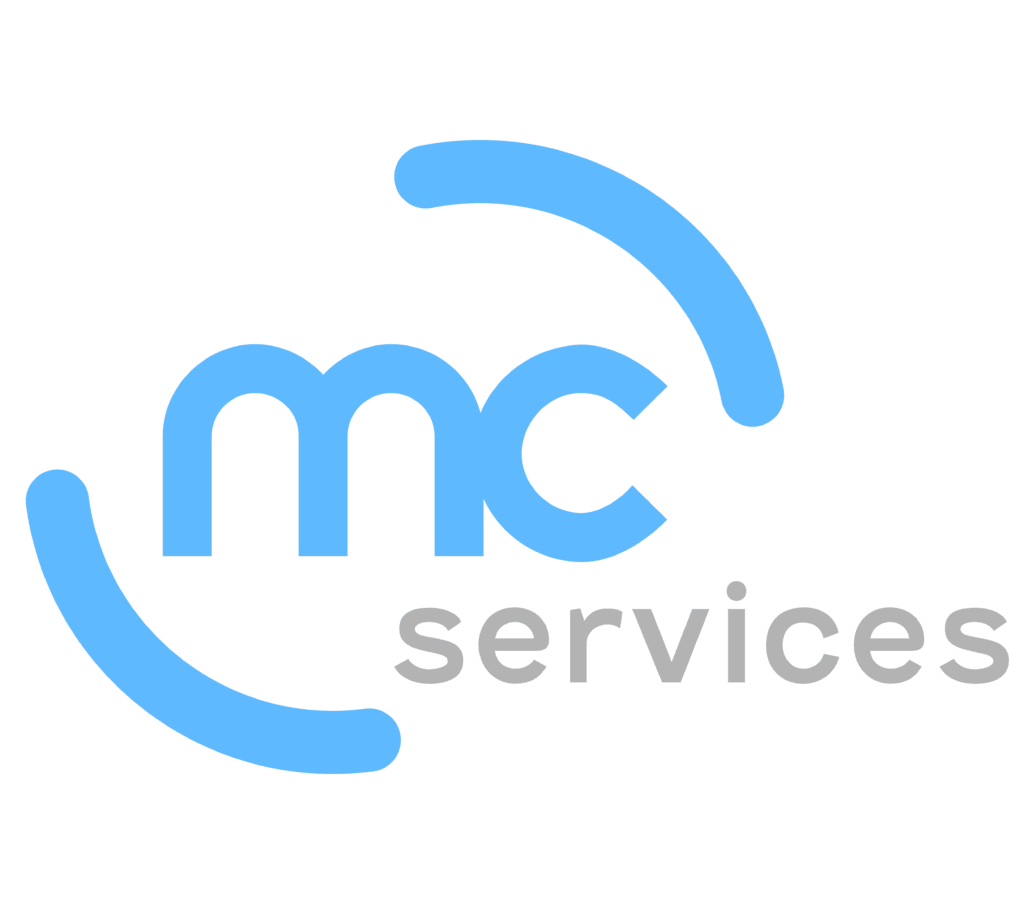Small business owners need reliable IT support that keeps everything running, but they also need to keep costs in check. That’s not always easy. IT support pricing can vary widely, and it’s rarely just about the hourly rate.
A Forrester study found that 41% of businesses deal with unexpected downtime every week or month. These disruptions often lead to extra costs, especially when IT support is slow, reactive, or not part of a managed plan. That’s why understanding what drives the cost of IT support for small businesses is so important.
| “Most small business owners we speak with don’t want the cheapest IT—they want support they can count on without surprise fees.” – Duane Maas, Director at MC Services |
In this blog, you’ll learn what affects IT support cost for small businesses, which pricing models exist, what services are included, how to avoid overspending, and how to measure the value you’re really getting.
Key Factors That Shape Your IT Support Costs
The cost of IT support depends on how your business uses technology. There’s no one-size-fits-all number.
Below are the main factors that influence your cost.
1. Type of Service Model
You’ll choose between break-fix or managed services. The difference matters for your monthly cost.
- Break-fix: You pay only when something breaks. This can seem cheaper upfront but becomes costly if issues happen often.
- Managed services: You pay a flat monthly rate. The provider handles all your IT proactively. This gives you predictability and less downtime.
If your business needs consistent support, managed services usually offer better value.
2. Scope of Services
Not all IT support plans cover the same things. Some include just helpdesk support. Others include full-stack services like cybersecurity, patching, and cloud management.
- Basic helpdesk: Fixes day-to-day issues like email errors or printer problems.
- Full-stack IT: Includes helpdesk, cybersecurity, system updates, compliance support, and more.
According to HubSpot, 86% of service teams say help desk systems boost productivity. So, expanding your scope to include a robust helpdesk is beyond just wanting coverage.
The more services you need, the higher your cost, but also the higher your protection and efficiency.
3. User Count and Devices
Most providers charge based on the number of users or devices.
- Per user: Each employee counts as one unit. This works well if users have multiple devices.
- Per device: Each laptop, desktop, tablet, or server counts separately.
As your team grows, costs rise. Some providers offer discounted bundles once you pass a user threshold (e.g., 20+).
4. Location
Where your business is located affects pricing. Urban areas usually have higher labor costs. Rural areas may have fewer options, which can also drive up prices.
- Urban: More IT providers available, but often higher rates.
- Rural: Fewer providers and slower response times can raise costs.
Also, if you need on-site support often, your provider’s travel time will factor into your bill.
5. Support Hours
Do you need help only during business hours, or do you require 24/7 support?
- Standard hours: 8 am–5 pm support costs less.
- After-hours/24-7: You’ll pay more for overnight or weekend support.
Speed and convenience matter. Nearly 80% of consumers say these are the most important elements of a positive customer experience. If your business runs critical systems around the clock, 24/7 support may be worth the investment.
Stop Overpaying for Unreliable IT!Find out how much better IT support can cost, and perform, with a plan made for you. |
Typical Small Business IT Support Pricing Models
IT support pricing depends on how you structure your services. Here are the most common pricing models for small businesses.
Break-Fix Pricing
- Hourly billing: You pay for support when something breaks. No monthly fee. It seems cheaper, but often results in bigger repair bills.
- No predictability: You don’t know when or how much you’ll need to pay. This can hurt your budget.
Managed IT Support Pricing
- Flat monthly rate: You pay a set fee each month per user, device, or based on your needs.
- Includes proactive support: Monitoring, patching, antivirus, cloud support, and helpdesk are often included.
Project-Based Pricing
- One-time cost: Used for things like network setup, server installs, or cloud migrations.
- Based on scope: Cost depends on how complex the project is and how long it takes.
Monthly IT Support Contract Pricing
Many providers offer different levels of support with a tiered plan, from basic helpdesk to full IT management.
Examples of pricing tiers:
- Basic support plan: $50/user/month – covers helpdesk, email, and basic troubleshooting.
- Mid-level plan: $100/user/month – adds cloud support and cybersecurity.
- Advanced plan: $150/user/month – includes everything above plus backup, disaster recovery, and compliance support.
What the Average Cost of IT Support Services Gets You
Not all IT support is equal. Here’s what you can expect from common price points.
$100–$200/hour (Break-Fix)
- Pay-per-issue: For one-off fixes, emergency support, or consulting. No service guarantees or proactive support.
- Risk of high bills: If something major breaks, the hours add up fast.
$50–$150/user/month (Managed IT)
- Flat-rate support: Includes proactive maintenance, monitoring, antivirus, and helpdesk.
- Better uptime and security: Fixes issues before they become major problems.
$1,000–$5,000/month (Flat-rate Plans for SMBs)
- Full IT support: All-inclusive support for small businesses with 10–50 employees.
- Strong outcomes: More uptime, lower risk, faster issue resolution, and long-term savings.
| Learn More About How You Can Use The Latest Technology Efficiently |
Reducing IT Support Costs Without Compromising Quality
Cutting IT costs doesn’t mean settling for poor service. There are smarter ways to reduce spending without risk.
- Bundle services: Combine support, cybersecurity, and backup with one provider. This often reduces overhead and gives better coordination.
- Use remote support: Most issues can be solved remotely. It’s faster and cheaper than on-site visits.
- Monitor usage: Review your software and tools regularly. Remove licenses and apps your team doesn’t use.
- Choose scalable solutions: Make sure your provider can grow with your business so you avoid expensive migrations later.
Paying less isn’t the goal. Spending wisely is.
How to Evaluate IT Support Services Pricing Offers

All quotes are not the same. Ask the right questions to find out what you’re getting.
- What’s included? Make sure the quote covers monitoring, patching, backups, security, and support, not just one or two.
- How are add-ons handled? Ask how pricing changes when you add users or need new services.
- What’s in the SLA? A good provider should offer clear guarantees for response time and resolution.
- What about cybersecurity? If it’s not included or clearly defined, that’s a red flag.
Look for providers who offer clear, written terms and value-based services—not vague promises.
Example of an IT Support Cost Breakdown for a 25-User Business
Let’s say your business has 25 employees. You rely on cloud apps, email, Wi-Fi, file sharing, and everyday tech to get work done. You don’t need a huge internal IT team—but you do need fast, secure, and consistent support.
Here’s what your IT support cost might look like with a managed services provider:
Managed IT Services @ $125 Per User
This includes help desk support, patching, updates, remote monitoring, basic cybersecurity tools, and vendor management. For 25 users, that comes to $3,125 per month.
Cybersecurity Add-On @$500/Month
If you handle sensitive data or must meet compliance standards, you’ll likely need advanced cybersecurity protection like email filtering, endpoint detection, and security awareness training.
That brings your IT support services cost up a bit, but protects your business from real financial risks.
Backup and disaster recovery @$300/month
This covers automated backups, data recovery testing, and business continuity planning. Without it, a ransomware incident or server failure could wipe out your operations.
Total monthly cost: Around $4,000
Now compare that to other options. A single full-time IT employee often costs $80,000 or more per year, not including training, tools, and benefits. That’s over $6,500 a month, without the 24/7 coverage or specialist knowledge you get from a managed provider.
Or consider downtime. According to CloudSecureTech, just one minute of downtime costs about $137 for a small business when you factor in lost productivity, missed sales, and recovery time. If you don’t have the right support in place, those costs can stack up quickly.
Managed services give you predictable pricing, faster response times, and layered protection for less than the cost of doing it all in-house or relying on break-fix support.
Is the Cost of IT Support for Small Businesses Worth It?
Many small businesses hesitate to spend on IT until something breaks. Here’s what you get when you invest in proper support.
- Stronger security: Prevent cyberattacks, data theft, and unauthorized access.
- Improved productivity: Your team doesn’t lose time dealing with IT issues.
- Responsive support: Fast answers when you need them keep work moving.
The goal is simple: spend on what protects and powers your business, not just what keeps the lights on.
Comparing In-House IT vs. Outsourced IT Support
If you’re still unsure whether outsourced support is worth it, take a look at the numbers side by side.
| Feature | In-House IT | Outsourced IT Support |
| Monthly Cost | $6,500+ (salary, tools, benefits) | $3,000–$5,000 (flat rate) |
| Coverage | One person, limited hours | Team of experts, 24/7 support |
| Scalability | Hard to scale | Easy to scale with growth |
| Expertise | Depends on the hire | Access to a full IT skillset |
| Risk of downtime | Higher (vacations, sick days) | Lower (always available) |
Outsourced support gives you more coverage and more skill, devoid of the stress of hiring.
Maximize Your IT Support Investments With MC Services
Your IT support cost depends on your service model, team size, and the level of coverage you need. But when you partner with a reliable provider, you get value for your money, which translates to less downtime, fewer issues, and better support.
MC Services delivers clear, fixed IT support for small business pricing that fits your business. We support 157 businesses across the U.S. and resolve 50% of IT issues within just four hours.
| Need Professional Help? Contact Our IT Support Specialists in Wisconsin! | ||
| Milwaukee | Pewaukee | Waukesha |
Want IT support that’s fast, predictable, and built for you? Contact us today for a free consultation and a custom quote.


